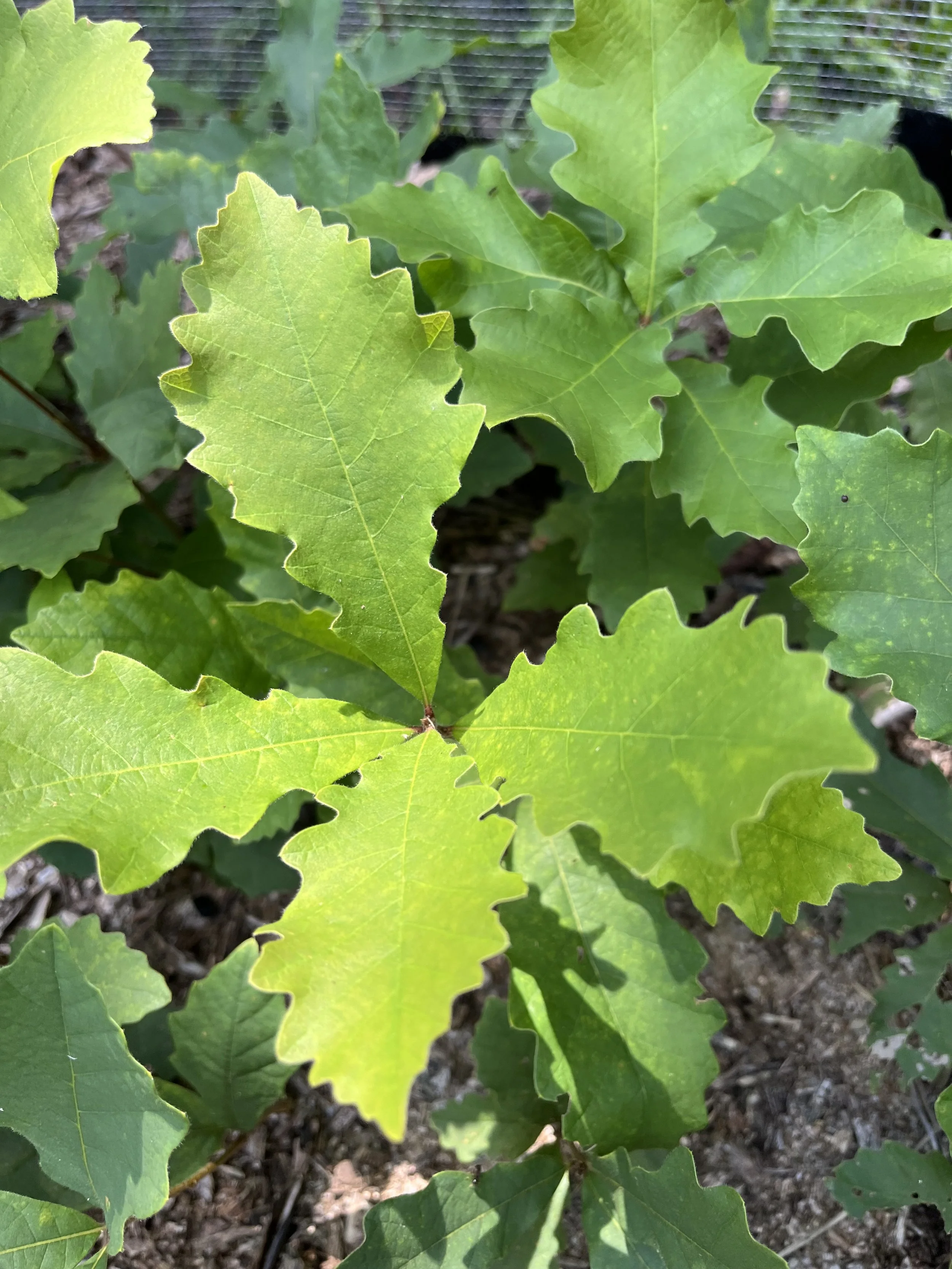Bur Oak
Small 1 yr old seedlings, 4-6 inches
Quercus macrocarpa
Bur Oak is a slow-growing but long-lived tree in the White Oak group common in the central United States. It's nuts provide important food for wildlife and humans, too. They are low in tannins and are some of the most palatable acorns around. Apparently some Burr Oak acorns can be eaten raw and are not astringent, but they may still benefit from leaching, a process that removes tannins from the acorns and makes them more palatable. Another intriguing method for removing the astringency from acorns is to sprout them in soil. White oaks bear heavy crops of acorns every few years, and lighter crops in the off years. This habit, called 'masting,' allows more seed to survive predation.
Bur Oak has a long taproot and is very drought tolerant. Along with other species in the white oak group it is know for its timber.
These seedlings are small and may need some extra attention or another year in a garden/nursery bed.
Small 1 yr old seedlings, 4-6 inches
Quercus macrocarpa
Bur Oak is a slow-growing but long-lived tree in the White Oak group common in the central United States. It's nuts provide important food for wildlife and humans, too. They are low in tannins and are some of the most palatable acorns around. Apparently some Burr Oak acorns can be eaten raw and are not astringent, but they may still benefit from leaching, a process that removes tannins from the acorns and makes them more palatable. Another intriguing method for removing the astringency from acorns is to sprout them in soil. White oaks bear heavy crops of acorns every few years, and lighter crops in the off years. This habit, called 'masting,' allows more seed to survive predation.
Bur Oak has a long taproot and is very drought tolerant. Along with other species in the white oak group it is know for its timber.
These seedlings are small and may need some extra attention or another year in a garden/nursery bed.
Small 1 yr old seedlings, 4-6 inches
Quercus macrocarpa
Bur Oak is a slow-growing but long-lived tree in the White Oak group common in the central United States. It's nuts provide important food for wildlife and humans, too. They are low in tannins and are some of the most palatable acorns around. Apparently some Burr Oak acorns can be eaten raw and are not astringent, but they may still benefit from leaching, a process that removes tannins from the acorns and makes them more palatable. Another intriguing method for removing the astringency from acorns is to sprout them in soil. White oaks bear heavy crops of acorns every few years, and lighter crops in the off years. This habit, called 'masting,' allows more seed to survive predation.
Bur Oak has a long taproot and is very drought tolerant. Along with other species in the white oak group it is know for its timber.
These seedlings are small and may need some extra attention or another year in a garden/nursery bed.
